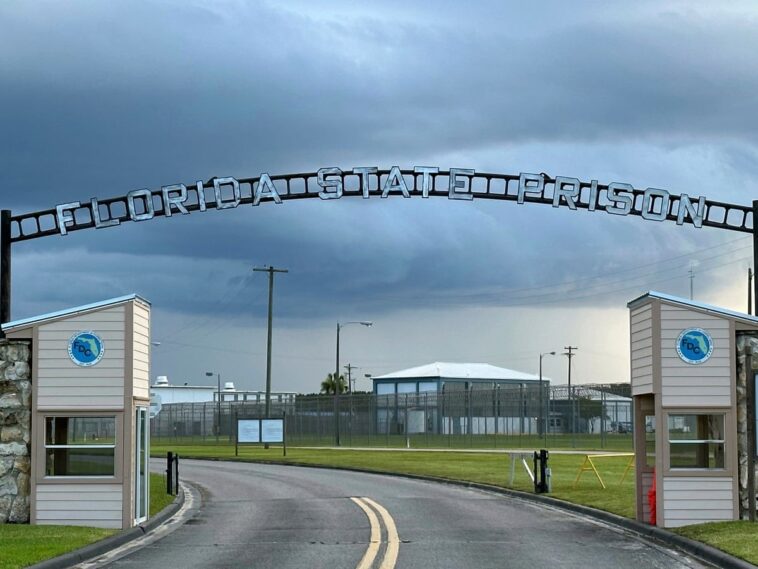It’s been over 43 years since the troubling incident wherein Janet White, an employee at an insurance office in Bay County, was abducted and tragically lost her life. The individual held responsible for this heinous crime, Kayle Barrington Bates, now 67 years old, is finally set to face the ultimate consequence. The date set for Bates to meet his fate, through lethal injection at Florida State Prison, is August 19. The execution order, signed recently by Governor Ron DeSantis, comes in the wake of the failure of an appeal attempt by Bates at the U.S. Supreme Court on June 30, in relation to a juror involved in his trial.
Bates’s conviction is rooted in the murder that took place in the summer of 1982 of Janet White. An employee at a State Farm insurance office, White was kidnapped from her workplace. Apart from being found guilty for murder, he also stood accused and was convicted for malicious charges like kidnapping, attempted sexual battery, and armed robbery.
From court documents, it was revealed that on the day of the crime, Bates broke into White’s office while she was away for lunch. Unaware of the impending danger, she returned, only to be surprised by Bates. Upon seeing Bates, White screamed in horror, fighting desperately for her life.
Wielding an upper hand, Bates exerted his dominance and forcibly escorted White from the safety of her office building into a secluded area in the woods. In a gruesome turn of events, he assaulted, strangled, and made an attempt to violate her sexually. The grave extent of his violence left White with close to 30 wounds, marks, and cuts on various parts of her body and face.
Bates was discovered at the site of the crime, incriminating evidence smeared all over his clothes in the form of the victim’s blood. Adding to this, he was also found carrying the victim’s ring, a chilling souvenir of his atrocious act.
Following his arrest, Bates was put on trial and consequently convicted for his deeds in 1983. He was awarded the death penalty, but a decision taken by a judge in the later years mandated a new sentencing hearing for Bates.
He was put on trial once again in the mid-nineties, where he received the same verdict as before – the death sentence. A pertinent detail documented in court records.
Last year, Bates made another appeal to the Florida Supreme Court. The plea was to permit an interview with a juror involved in his 1983 trial since there were murmurs of a potential familial connection between the juror and the victim, White.
However, Justice John Couriel dismissed this appeal citing that the effort to interview a juror, 40 years after the fact, was grossly overdue. Following this rejection from the Florida Supreme court, Bates tried his luck with the U.S. Supreme Court.
His attempt was in vain as on June 30, his petition to the U.S. Supreme court was denied. After this conclusive decision, DeSantis signed the final warrant for Bates’s execution. This decision came a mere three days after Michael Bell faced execution for his role in the murders of two individuals outside a bar in Jacksonville in 1993.
In the wake of Bell’s execution, the state has recorded as many as eight executions in a year, a feat that matches the previous records. As per the schedule, Edward Zakrzewski, convicted for the murder of his wife and two children back in 1994 in Okaloosa County, is next on the execution list.
The attorneys representing Zakrzewski have put forward a plea to the Florida Supreme Court, requesting to stall the execution. Their appeal, however, hasn’t been ruled upon as of now.
Mindful of its history, Florida has witnessed eight executions in the years 1984 and 2014, the highest tally since the reestablishment of the death penalty in 1976. This decision came on the back of a pause in executions in 1972 owing to a ruling by the U.S. Supreme Court.
Thus far this year, Florida has overseen the executions of inmates such as Thomas Gudinas carried out on June 24, followed by Anthony Wainwright on June 10. Other executed inmates include Glen Rogers on May 15, Jeffrey Hutchinson on May 1, Michael Tanzi on April 8.
Earlier in the year, Edward James was put to death on March 20 and James Ford on Feb. 13. With the list of executions mapping a grim reality, the state is steadfast in upholding its potent deterrent in the form of consequent executions.
With the impending execution of Bates and possibly Zakrzewski, the stage is set for the state to surpass its own record. As the demanding procedure of capital punishment continues in Florida, the grim reminders of past atrocities and a stern message for potential offenders paint a sorrowful yet resolute picture.

